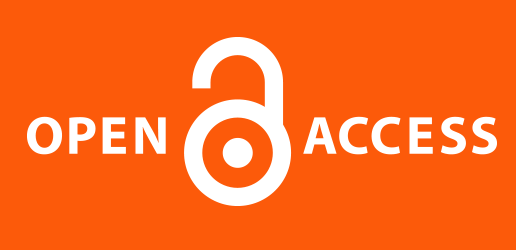|
International Journal for Research Trends and Innovation
International Peer Reviewed & Refereed Journals, Open Access Journal
ISSN Approved Journal No: 2456-3315 | Impact factor: 8.14 | ESTD Year: 2016
Scholarly open access journals, Peer-reviewed, and Refereed Journals, Impact factor 8.14 (Calculate by google scholar and Semantic Scholar | AI-Powered Research Tool) , Multidisciplinary, Monthly, Indexing in all major database & Metadata, Citation Generator, Digital Object Identifier(DOI)
|
Issue: November 2025
Volume 10 | Issue 11
Review Result and Publication of Paper within : 2-3 days
Click Here For more DetailsFor Authors
Forms / Download
Published Issue Details
Editorial Board
Other IMP Links
Facts & Figure
Impact Factor : 8.14
Issue per Year : 12
Volume Published : 10
Issue Published : 114
Article Submitted : 18478
Article Published : 7830
Total Authors : 20685
Total Reviewer : 756
Total Countries : 142
Indexing Partner
Licence
This work is licensed under a Creative Commons Attribution-NonCommercial 4.0 International License







|
Published Paper Details
|
|
| Paper Title: | Advancing Oncology Trails Through Home Phlebotomy: A Comprehensive Review of Patient-Centered Outcomes |
| Authors Name: | Dr. Hinal Panchal , Mr. Mayank Trivedi |
| Download E-Certificate: | Download |
| Author Reg. ID: |
IJRTI_205840
|
| Published Paper Id: | IJRTI2509005 |
| Published In: | Volume 10 Issue 9, September-2025 |
| DOI: | |
| Abstract: | Abstract Purpose Home phlebotomy has emerged as a patient-centered alternative to in-clinic blood collection in oncology. This review aimed to evaluate its impact on quality of life, adherence, satisfaction, healthcare utilization, and clinical outcomes, while identifying implementation challenges and future research needs. Design A narrative review was conducted of studies published between 2009 and 2024 across PubMed/MEDLINE, Embase, Cochrane Library, and CINAHL. Eligible studies examined adult oncology populations and assessed patient-centered outcomes, cost-effectiveness, or healthcare utilization related to home phlebotomy. Result Home phlebotomy consistently demonstrated improvements in patient adherence (up to 95% vs 75–80% in clinic settings), quality of life, and satisfaction, with positive effects on caregiver burden. Studies reported reductions of 20–30% in emergency department visits and 10–20% in hospital readmissions due to earlier detection of treatment-related complications (1,2). Comparative analyses suggest equivalent safety and sample integrity to traditional phlebotomy when protocols are followed (3). Emerging evidence also indicates potential economic benefits from reduced acute care utilization, though program implementation costs remain significant (4). Key challenges include regulatory oversight, reimbursement structures, workforce training, and technology integration for quality assurance and data sharing (5). Conclusion Home phlebotomy offers a safe and feasible alternative to clinic-based blood collection for cancer patients, with consistent evidence of benefits in adherence, satisfaction, and quality of life. While early data suggest favourable impacts on healthcare utilization and treatment continuity, broader adoption will require addressing regulatory, operational, and equity challenges. Integrating home phlebotomy into oncology care may enhance patient-centered delivery models and support decentralized clinical research. |
| Keywords: | Keywords: Home phlebotomy, cancer care, oncology, patient-centered outcomes, quality of life, healthcare delivery, remote monitoring, telehealth, cost-effectiveness, patient satisfaction. |
| Cite Article: | "Advancing Oncology Trails Through Home Phlebotomy: A Comprehensive Review of Patient-Centered Outcomes", International Journal of Science & Engineering Development Research (www.ijrti.org), ISSN:2455-2631, Vol.10, Issue 9, page no.a46-a54, September-2025, Available :http://www.ijrti.org/papers/IJRTI2509005.pdf |
| Downloads: | 0002293 |
| ISSN: |
2456-3315 | IMPACT FACTOR: 8.14 Calculated By Google Scholar| ESTD YEAR: 2016 An International Scholarly Open Access Journal, Peer-Reviewed, Refereed Journal Impact Factor 8.14 Calculate by Google Scholar and Semantic Scholar | AI-Powered Research Tool, Multidisciplinary, Monthly, Multilanguage Journal Indexing in All Major Database & Metadata, Citation Generator |
| Publication Details: |
Published Paper ID: IJRTI2509005
Registration ID:205840
Published In: Volume 10 Issue 9, September-2025
DOI (Digital Object Identifier):
Page No: a46-a54 Country: Vadodara, Gujarat, India Research Area: Science Publisher : IJ Publication Published Paper URL : https://www.ijrti.org/viewpaperforall?paper=IJRTI2509005 Published Paper PDF: https://www.ijrti.org/papers/IJRTI2509005 |
| Share Article: | |
|
Click Here to Download This Article |
|
| Article Preview | |
|
|
|
Major Indexing from www.ijrti.org
| Google Scholar | ResearcherID Thomson Reuters | Mendeley : reference manager | Academia.edu |
| arXiv.org : cornell university library | Research Gate | CiteSeerX | DOAJ : Directory of Open Access Journals |
| DRJI | Index Copernicus International | Scribd | DocStoc |
ISSN Details
 |
 |
ISSN: 2456-3315
Impact Factor: 8.14 and ISSN APPROVED,
Journal Starting Year (ESTD) : 2016
DOI (A digital object identifier)
 Providing A digital object identifier by DOI.ONE How to Get DOI? |
Conference
Open Access License Policy
Important Details
Join RMS/Earn 300
WhatsApp
Click Here
Click Here
Indexing Partner |
|||
| Copyright © 2025 - All Rights Reserved - IJRTI | |||






